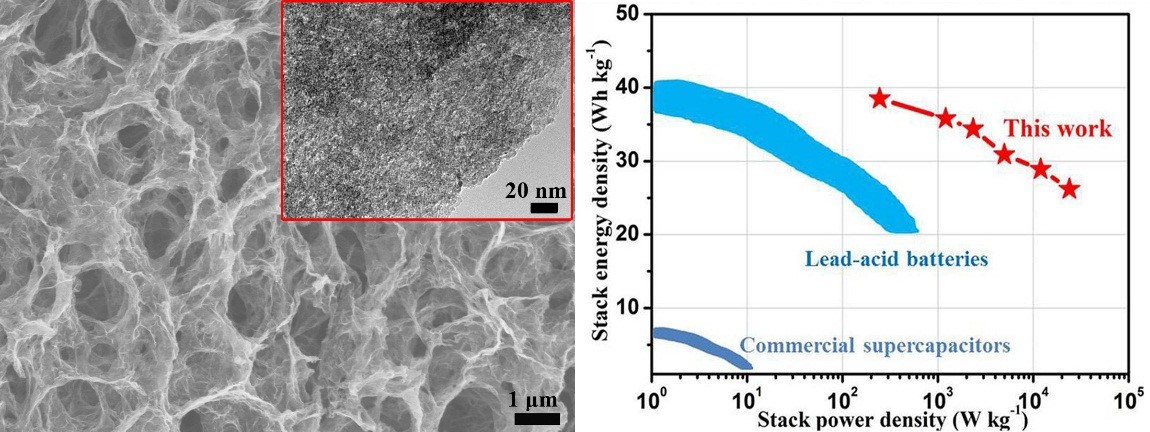Supercapacitors (SCs) have been regarded as one of most promising energy storage devices due to the fast charging capability and long cycle life. Unfortunately, the relatively poor energy density, at least one order of magnitude lower than those of traditional batteries limits the broad application of these SCs. Recently, Prof. ZHANG Yuegang’s group from Suzhou Institute of Nano-Tech and Nano-Bionics, Chinese Academy of Sciences, has made progress in constructing three-dimensional boron, nitrogen, and phosphorus ternary doped holey graphene hydrogel (BNP-HGH) electrode with ultrahigh energy density. In this work, the boron, nitrogen, and phosphorus were doped into carbon networks, which can not only facilitate charge transfer between neighboring carbon atoms, and thus enhance electric double layer capacitive (EDLC) performance; but also give rise to pseudocapacitance by faradaic reactions between electrode material and electrolyte. Furthermore, two types of different pores enable the BNP-HGH electrode to present larger ion accessible surface area and provide efficient electron and ion transport pathways. Based on these features, the resulted BNP-HGH electrode can deliver a gravimetric capacitance of 350 F g-1 and a volumetric capacitance of 234 F cm-3, which are the highest to date for graphene-based SCs in an organic electrolyte. Even normalized by the total weight or volume of the whole SC, the device still shows an impressive stack gravimetric and volumetric energy densities of 38.5 Wh kg-1 and 57.4 Wh L-1, respectively, comparable to those of lead-acid batteries (35–40 Wh kg-1 and 50–90 Wh L-1). This work has been published in Nano Energy entitled “Achieving commercial-level mass loading in ternary-doped holey graphene hydrogel electrodes for ultrahigh energy density supercapacitors”. This work was supported by the CAS-Queensland Collaborative Science Fund (121E32KYSB20160032), National Natural Science Foundation of China (No. 21403287, No. 21433013, No. 51402345), the National Key R&D Program of China (2016YFB0100100), the CAS-DOE Joint Research Program (121E32KYSB20150004). 
Figure. SEM image of BNP-HGH and the performance of BNP-HGH electrode. (Image by SINANO) |

